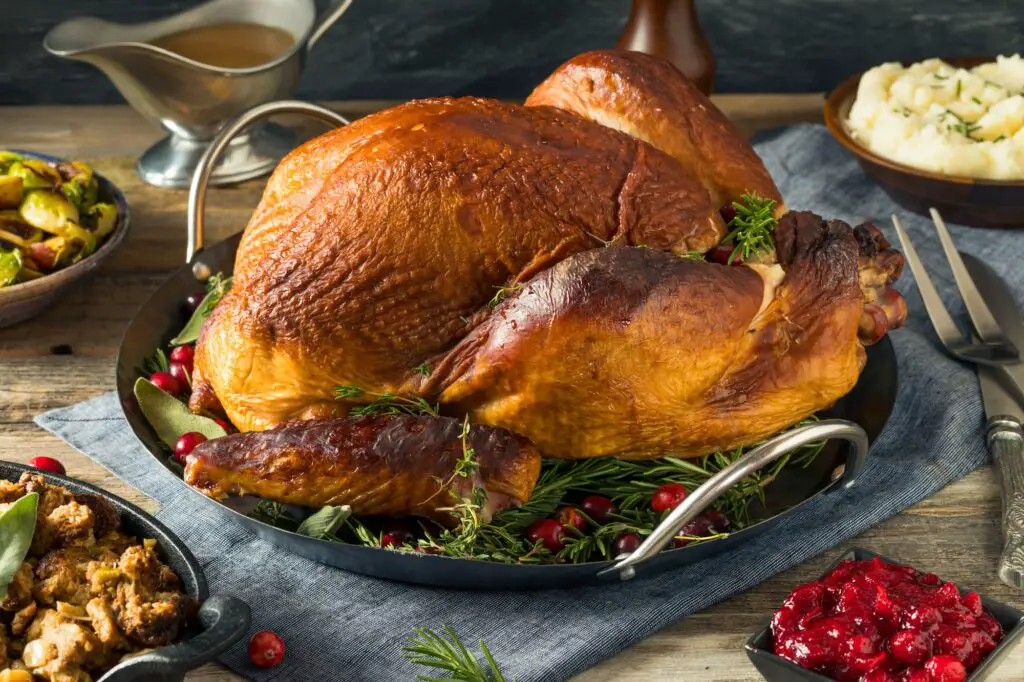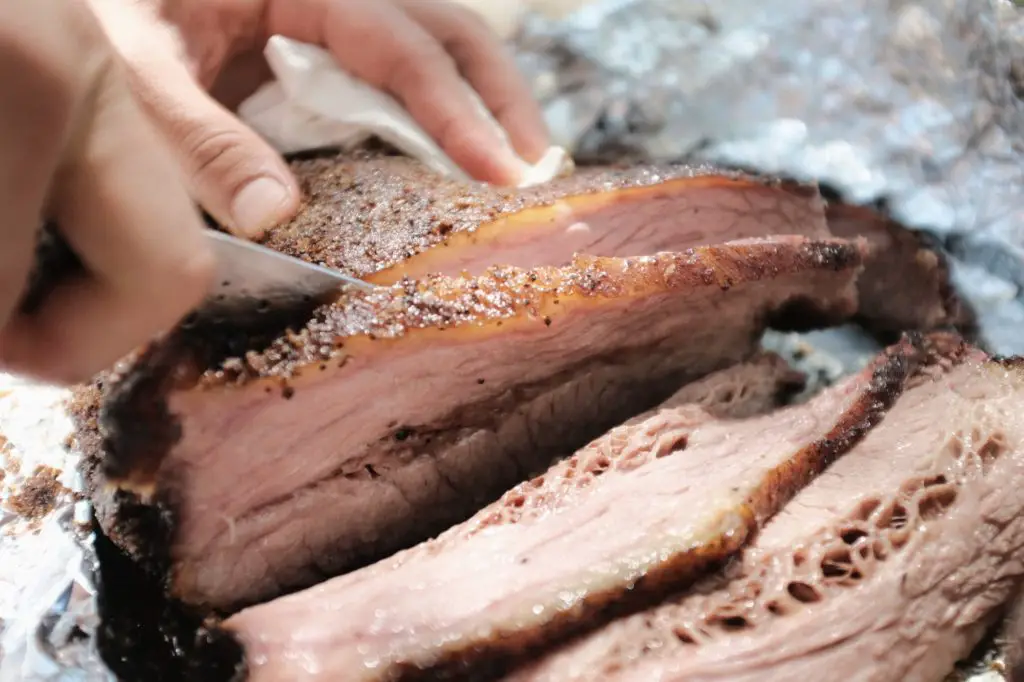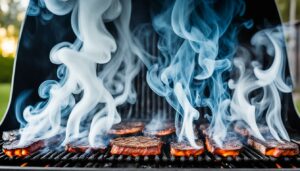If you’re a fan of smoked meats, then you know that the flavor and texture can be absolutely delicious. But did you know that the type of wood pellet you use can make a big difference in the outcome of your dish? In this comprehensive guide, we will discuss the different types of wood pellets and explain which foods each is best suited for. We’ll also give you some tips on smoking meat using wood pellets, so you can create the perfect meal every time!
The Main Types of Wood Pellets
There are two main types of wood pellets: hardwood and softwood. Hardwood pellets are made from, you guessed it, hardwoods like hickory, oak, or mesquite. These pellets tend to have a more intense flavor, so they’re perfect for bolder meats like beef or pork. Softwood pellets are made from pine, cedar, or other coniferous trees. These pellets are milder in flavor and work well with poultry and fish. If you want to know what the best pellets are for smoking pizza or brisket then we have that covered in our other posts.
Take Your Time
In addition to the type of wood pellet you use, the amount of time you smoke your meat can also affect the flavor. Generally speaking, the longer you smoke your meat, the smokier it will taste. If you’re looking for a subtle smoky flavor, smoke your meat for less time. If you want it to be really smoked, then smoke it for longer. Just keep in mind that the longer you smoke your meat, the tougher it will become.
There are endless possibilities when it comes to smoking meats with wood pellets. So don’t be afraid to experiment and find the flavors that you like best. Try different types of wood pellets and see how they affect the flavor of your dish. You can also mix and match different types of pellets to create a unique flavor profile.
What Kinds of Wood Are Suitable for Smoking?
Now that we’ve covered the basics, let’s get into the different types of wood pellets you can use for smoking.
Hickory
Hickory is a popular hardwood used for smoking meats due to its strong, bold flavor. It has a sweet, smoky taste that is perfect for adding depth and complexity to a variety of meats. When used in an electric smoker, hickory can produce a delicious, authentic smoky flavor that is perfect for barbecue enthusiasts.
One meat that hickory pairs especially well with is pork. The sweet, smoky flavor of hickory complements the rich, savory taste of pork perfectly. Whether you’re smoking pork shoulder, ribs, or bacon, hickory is a great choice that will help to create a delicious, mouth-watering meal.
When using hickory in an electric smoker, it’s important to use the right amount. Too much hickory can overpower the taste of the meat, while too little won’t provide enough of a smoky flavor. Experiment with different amounts of hickory wood to find the perfect balance that works for you.
Oak
Oak is a versatile hardwood that can be used to smoke both pork and beef. It has a slightly smoky flavor that complements the natural taste of these meats, adding depth and complexity to the overall flavor profile. Unlike some of the stronger hardwoods, oak has a mild, slightly sweet flavor that can be enjoyed by even those who aren’t fans of bold smoky flavors.
When using oak in an electric smoker, it’s important to choose high-quality, seasoned wood. Freshly cut oak can contain moisture that can lead to a bitter taste in the finished product, so it’s best to select oak that has been dried and seasoned for at least six months.
One of the great things about oak is that it burns hot and slow, producing consistent heat that is perfect for smoking meats. The low-and-slow cooking process allows the meat to absorb the flavors of the smoke and the marinade, resulting in a delicious and juicy end product.
In addition to pork and beef, oak can also be used to smoke poultry, fish, and other meats. Its mild flavor pairs well with a variety of ingredients, making it a great choice for those who are looking for a more subtle smoky taste.
Mesquite
Mesquite is a popular hardwood for smoking meats, particularly for those who love bold, smoky flavors. It is often associated with Texas-style barbecue and is known for its unique, intense smoky flavor.
Mesquite is a strong hardwood that burns hot and fast, producing a lot of smoke. This makes it ideal for those who want to infuse their meats with a lot of smoky flavors in a short amount of time. The intense smoky flavor of mesquite pairs particularly well with beef and pork, helping to enhance their natural taste and create a delicious, mouth-watering meal.
When using mesquite in an electric smoker, it’s important to use it in moderation. A little bit of mesquite goes a long way, and too much can overpower the taste of the meat. It’s best to start with a small amount and add more if needed.
Mesquite is also a great choice for those who are looking to add a smoky flavor to other foods, such as vegetables, fruits, and even cheese. Its strong, smoky flavor can add depth and complexity to many different dishes, making it a versatile ingredient for any barbecue enthusiast.
Pine
Pine is a softwood that is commonly used for smoking poultry and fish. Unlike the stronger hardwoods like mesquite or hickory, pine has a mild, woodsy flavor that imparts a subtle smoky taste to the meat. This makes it a good choice for those who are looking for a more delicate smoky flavor or who want to smoke delicate meats like poultry or fish.
When using pine in an electric smoker, it’s important to use it in moderation as it can produce a lot of resin that can have a bitter taste. To minimize the amount of resin produced, it’s best to use dry, seasoned pine wood chips and to soak them in water before using them in the smoker.
Pine is also a good choice for those who are looking for a more environmentally friendly option for smoking their meats. Unlike hardwoods, which are typically harvested from mature trees, pine is a readily renewable resource that can be sustainably harvested.
Cedar
Cedar is a type of softwood that is commonly used for smoking food, particularly fish and seafood. Unlike other types of wood, cedar has a unique flavor that imparts a delicate, smoky taste to the food. This is why it is highly sought after by home cooks and professional chefs alike for smoking food.
Cedar wood also has a low burning temperature, which helps to preserve the moisture and tenderness of the food being smoked, resulting in a succulent and flavorful finished product. Additionally, cedar has a high oil content that provides a distinctive aroma, further enhancing the flavor of the food. All of these properties combined make cedar an excellent choice for smoking fish and seafood, as it helps to produce delicious, flavorful dishes that are truly unique and memorable.
Which Wood For Which Food?
Now that you know the different varieties of wood pellets, let’s take a look at some specific foods and see which type of pellets are best suited for them.
Beef
When smoking beef, it’s important to use hardwood pellets rather than softwood, as the flavor produced by hardwoods tends to be bolder and better suited to the rich taste of beef. There are several different types of hardwood pellets that can be used, including hickory, oak, and mesquite. Hickory is a popular choice as it imparts a strong, smoky flavor that is well-suited to beef. However, oak or mesquite can also work well, depending on your personal preferences.
The amount of time you smoke your beef will depend on the size and thickness of the meat, as well as the desired level of smoky flavor. Generally, you’ll want to smoke your beef for anywhere from two to six hours. A two-hour smoke will produce a mild, subtle smoky flavor, while a six-hour smoke will produce a much more pronounced smoky taste. The temperature at which you smoke your beef will also affect the final result, so it’s important to monitor the temperature throughout the smoking process to ensure that the meat cooks evenly and to your desired level of doneness.
Pork
Pork, like beef, is a meat that pairs well with the bold flavor of hardwoods. When smoking pork, you can use the same types of hardwood pellets as you would with beef, such as hickory, oak, and mesquite. Each of these types of wood has a distinct flavor that will infuse the pork with a unique and delicious smoky taste.
The amount of time you smoke your pork will depend on the size and thickness of the meat, as well as your desired level of smoky flavor. Generally, you’ll want to smoke your pork for two to six hours. A two-hour smoke will produce a mild, subtle smoky flavor, while a six-hour smoke will produce a much more pronounced smoky taste.
When smoking pork, it’s important to monitor the temperature of the meat to ensure that it cooks evenly and to your desired level of doneness. Pork is typically considered fully cooked when it reaches an internal temperature of 145°F, but you may prefer to smoke it for a longer period of time to achieve a more tender, juicy result.
No matter how you choose to smoke your pork, the smoky flavor imparted by the hardwood pellets will complement the natural flavor of the meat, resulting in a delicious and satisfying dish. Whether you’re smoking a pork shoulder, ribs, or another cut, the right hardwood pellets and the right amount of time will help you create a mouth-watering and unforgettable meal.
Poultry
Poultry, such as chicken or turkey, is best smoked with softwood pellets. Unlike beef or pork, poultry has a more delicate flavor that can be overpowered by the bold flavors of hardwoods. Softwoods, such as cedar or pine, will provide just the right amount of smoky flavor to complement the delicate taste of the poultry.

When smoking poultry, you’ll want to smoke it for one to four hours. The exact amount of time will depend on the size and thickness of the meat, as well as your desired level of smoky flavor. A one-hour smoke will produce a mild, subtle smoky flavor, while a four-hour smoke will produce a more pronounced smoky taste.
It’s important to monitor the temperature of the poultry as it smokes to ensure that it cooks evenly and to your desired level of doneness. Poultry is considered fully cooked when it reaches an internal temperature of 165°F. To achieve a perfectly smoked poultry dish, it’s important to smoke it at a low and consistent temperature to preserve its moisture and tenderness.
Fish
Fish is best smoked with softwoods, such as cedar or pine, which will infuse it with a delicate and flavorful smoky taste without overpowering its natural flavor. The type of softwood you choose will depend on your personal preferences, as each one will impart a slightly different smoky flavor to the fish.
The amount of time you smoke your fish will depend on the type of fish and the thickness of the fillets. For most types of fish, a smoke time of 30 minutes to two hours is sufficient. Thinner fillets will take less time to smoke than thicker fillets, so it’s important to keep this in mind when smoking fish.
When smoking fish, it’s important to monitor the temperature to ensure that it cooks evenly and to your desired level of doneness. Fish is considered fully cooked when it reaches an internal temperature of 145°F. To achieve a perfectly smoked fish dish, it’s important to smoke it at a low and consistent temperature to preserve its delicate texture and flavor.
Now that you know the different types of wood pellets available, it’s time to choose the right one for your next smoking adventure! Experiment with different types of wood to find the flavor that best suits your taste. And don’t forget to keep these tips in mind for the perfect smoked meal every time.
Smoked Brisket Recipe

Ingredients:
- One beef brisket (about 12 pounds)
- One bottle of barbecue sauce
- One cup of wood pellets (hickory or oak)
- One tablespoon of salt
- One tablespoon of black pepper
Instructions:
Trim any excess fat from the brisket and rub it with salt and pepper. Preheat your smoker to 225 degrees Fahrenheit. Place the brisket in the smoker and smoke it for about 12 hours, or until it’s tender and falls apart easily. During the last hour of smoking, brush the brisket with barbecue sauce. Remove from smoker and allow to rest for about 15 minutes before slicing. Enjoy!
This smoked brisket recipe is perfect for a weekend barbecue with friends and family. The beef brisket is smoky and delicious, and the barbecue sauce gives it a perfect finishing touch. So fire up your smoker and give this recipe a try! You’ll be glad you did.
Now that you know all about smoking with wood pellets, it’s time to get out there and start cooking! Experiment with different types of wood pellets and see which ones give your food the best flavor. With a little bit of practice, you’ll be able to create smoked meats that are sure to impress your friends and family.
Did you find this guide helpful? Let us know in the comments below! And be sure to check out our other guides for more cooking tips and tricks.
Enjoy!







